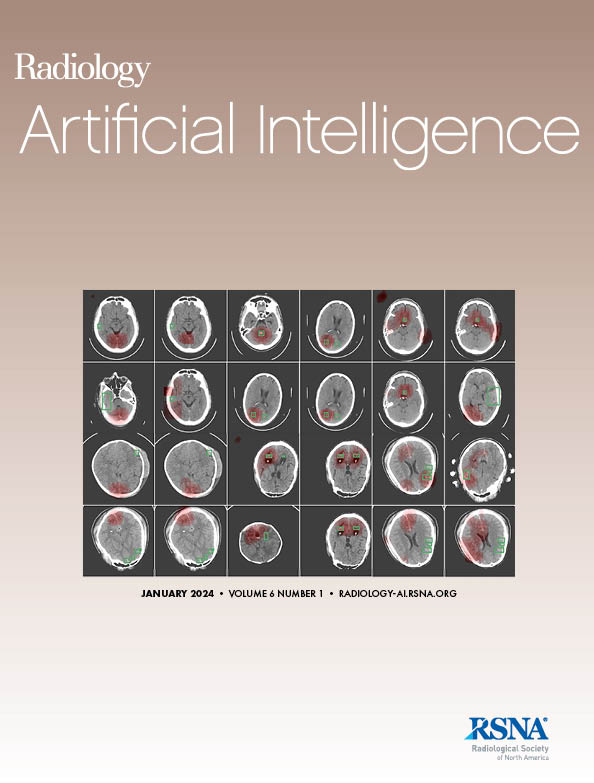Sang-Wook Lee, Jongmin Choi, Min-Je Park, Hajin Kim, Soo-Heang Eo, Garam Lee, Sulgi Kim, Jungyo Suh
求助PDF
{"title":"Development of Privacy-preserving Deep Learning Model with Homomorphic Encryption: A Technical Feasibility Study in Kidney CT Imaging.","authors":"Sang-Wook Lee, Jongmin Choi, Min-Je Park, Hajin Kim, Soo-Heang Eo, Garam Lee, Sulgi Kim, Jungyo Suh","doi":"10.1148/ryai.240798","DOIUrl":null,"url":null,"abstract":"<p><p>Purpose To evaluate the technical feasibility of implementing homomorphic encryption in deep learning models for privacy-preserving CT image analysis of renal masses. Materials and Methods A privacy-preserving deep learning system was developed through three sequential technical phases: a reference CNN model (Ref-CNN) based on ResNet architecture, modification for encryption compatibility (Approx-CNN) by replacing ReLU with polynomial approximation and max-pooling with averagepooling, and implementation of fully homomorphic encryption (HE-CNN). The CKKS encryption scheme was used for its capability to perform arithmetic operations on encrypted real numbers. Using 12,446 CT images from a public dataset (3,709 renal cysts, 5,077 normal kidneys, and 2,283 kidney tumors), we evaluated model performance using area under the receiver operating characteristic curve (AUC) and area under the precision-recall curve (AUPRC). Results All models demonstrated high diagnostic accuracy with AUC ranging from 0.89-0.99 and AUPRC from 0.67-0.99. The diagnostic performance trade-off was minimal from Ref-CNN to Approx-CNN (AUC: 0.99 to 0.97 for normal category), with no evidence of differences between models. However, encryption significantly increased storage and computational demands: a 256 × 256-pixel image expanded from 65KB to 32MB, requiring 50 minutes for CPU inference but only 90 seconds with GPU acceleration. Conclusion This technical development demonstrates that privacy-preserving deep learning inference using homomorphic encryption is feasible for renal mass classification on CT images, achieving comparable diagnostic performance while maintaining data privacy through end-to-end encryption. ©RSNA, 2025.</p>","PeriodicalId":29787,"journal":{"name":"Radiology-Artificial Intelligence","volume":" ","pages":"e240798"},"PeriodicalIF":13.2000,"publicationDate":"2025-08-27","publicationTypes":"Journal Article","fieldsOfStudy":null,"isOpenAccess":false,"openAccessPdf":"","citationCount":"0","resultStr":null,"platform":"Semanticscholar","paperid":null,"PeriodicalName":"Radiology-Artificial Intelligence","FirstCategoryId":"1085","ListUrlMain":"https://doi.org/10.1148/ryai.240798","RegionNum":0,"RegionCategory":null,"ArticlePicture":[],"TitleCN":null,"AbstractTextCN":null,"PMCID":null,"EPubDate":"","PubModel":"","JCR":"Q1","JCRName":"COMPUTER SCIENCE, ARTIFICIAL INTELLIGENCE","Score":null,"Total":0}
引用次数: 0
引用
批量引用
Abstract
Purpose To evaluate the technical feasibility of implementing homomorphic encryption in deep learning models for privacy-preserving CT image analysis of renal masses. Materials and Methods A privacy-preserving deep learning system was developed through three sequential technical phases: a reference CNN model (Ref-CNN) based on ResNet architecture, modification for encryption compatibility (Approx-CNN) by replacing ReLU with polynomial approximation and max-pooling with averagepooling, and implementation of fully homomorphic encryption (HE-CNN). The CKKS encryption scheme was used for its capability to perform arithmetic operations on encrypted real numbers. Using 12,446 CT images from a public dataset (3,709 renal cysts, 5,077 normal kidneys, and 2,283 kidney tumors), we evaluated model performance using area under the receiver operating characteristic curve (AUC) and area under the precision-recall curve (AUPRC). Results All models demonstrated high diagnostic accuracy with AUC ranging from 0.89-0.99 and AUPRC from 0.67-0.99. The diagnostic performance trade-off was minimal from Ref-CNN to Approx-CNN (AUC: 0.99 to 0.97 for normal category), with no evidence of differences between models. However, encryption significantly increased storage and computational demands: a 256 × 256-pixel image expanded from 65KB to 32MB, requiring 50 minutes for CPU inference but only 90 seconds with GPU acceleration. Conclusion This technical development demonstrates that privacy-preserving deep learning inference using homomorphic encryption is feasible for renal mass classification on CT images, achieving comparable diagnostic performance while maintaining data privacy through end-to-end encryption. ©RSNA, 2025.
基于同态加密的隐私保护深度学习模型的发展:肾脏CT成像技术可行性研究。
“刚刚接受”的论文经过了全面的同行评审,并已被接受发表在《放射学:人工智能》杂志上。这篇文章将经过编辑,布局和校样审查,然后在其最终版本出版。请注意,在最终编辑文章的制作过程中,可能会发现可能影响内容的错误。目的评估在深度学习模型中实现同态加密的技术可行性,以保护肾脏肿块的隐私。基于ResNet架构的参考CNN模型(Ref-CNN)、用多项式近似代替ReLU、用平均池化代替最大池化来改进加密兼容性(approximate -CNN)、实现完全同态加密(HE-CNN)三个连续的技术阶段开发了一个隐私保护深度学习系统。CKKS加密方案用于对加密实数执行算术运算的能力。使用来自公共数据集的12,446张CT图像(3,709个肾囊肿,5,077个正常肾脏和2,283个肾肿瘤),我们使用接受者工作特征曲线(AUC)下面积和精确召回曲线(AUPRC)下面积来评估模型的性能。结果各模型的AUC范围为0.89 ~ 0.99,AUPRC范围为0.67 ~ 0.99,均具有较高的诊断准确率。从Ref-CNN到approximate - cnn的诊断性能权衡最小(正常类别的AUC: 0.99到0.97),没有证据表明模型之间存在差异。然而,加密显著增加了存储和计算需求:256 × 256像素的图像从65KB扩展到32MB, CPU推理需要50分钟,而GPU加速只需要90秒。这项技术的发展表明,使用同态加密保护隐私的深度学习推理对于CT图像上的肾脏肿块分类是可行的,在通过端到端加密保持数据隐私的同时获得相当的诊断性能。©RSNA, 2025年。
本文章由计算机程序翻译,如有差异,请以英文原文为准。

 求助内容:
求助内容: 应助结果提醒方式:
应助结果提醒方式:


